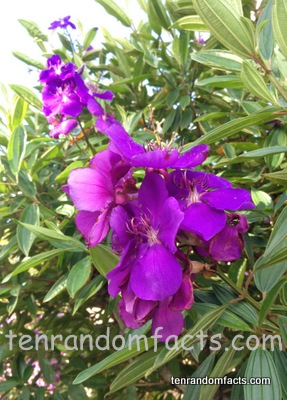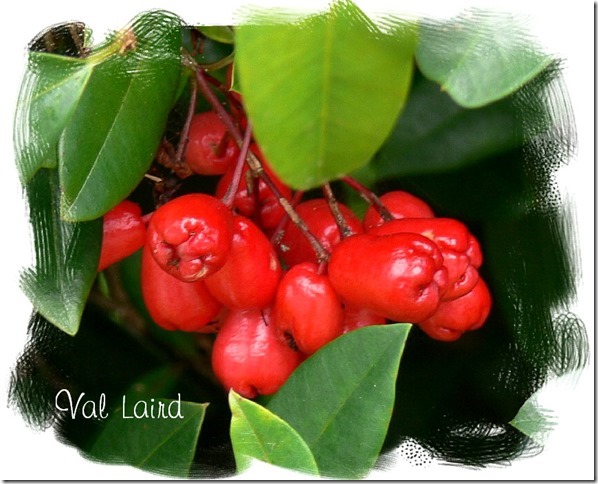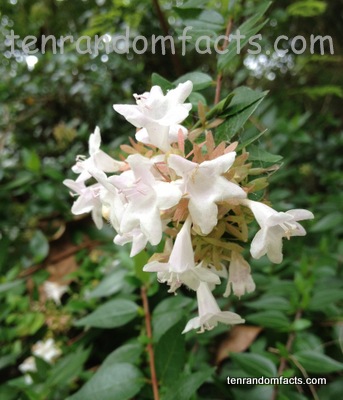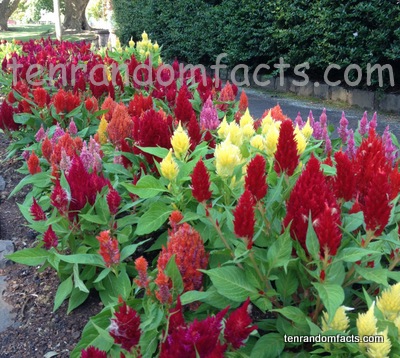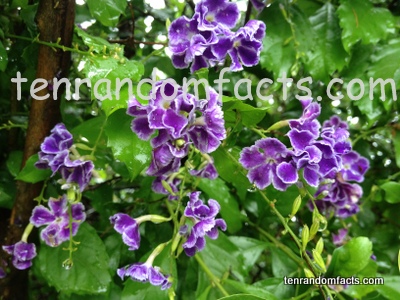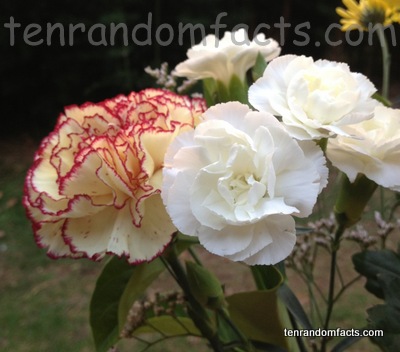
So many pretty colours.
- Carnations are flowering plants from the family Dianthus and their scientific name is Dianthus caryophyllus.
- It is believed that carnations are native to the Mediterranean area.
- Carnation plants grow up to 80cm (31.5 inches) in height and the flowers grow to 3 to 9 cm (1.1 to 3.5 inches) in diameter.
- The world’s biggest producer of carnations is Colombia, South America and the country provides the United States with 4/5 of its carnations.
- Carnation flowers are generally sweet smelling and usually have serrated single or double petals.
- Carnations are often worn on special occasions, most notably for weddings and on Mothers Day.
- Carnations are the national flower of Spain, Monaco and Slovenia.
- Carnation flowers were originally pink and peach, but now come in a wider variety of colours, including red, white, yellow and green.
- The Greek botanist and philosopher, Theophrastus, made mention of carnations in his writings in approximately 300 BC, naming them ‘dianthus’, meaning ‘divine flower’.
- Carnations have always been a popular cut flower, as they last well in water once cut.




